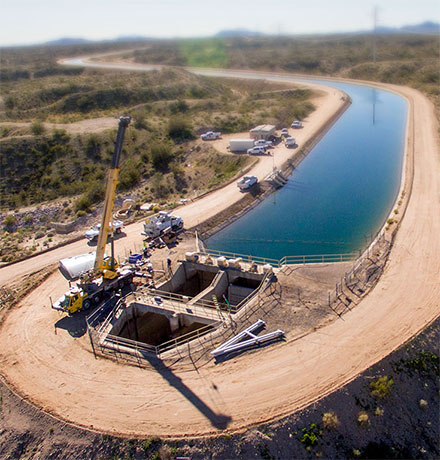- Water
- /
- CAP System
- /
- Water Operations
- /
- Biology
- /
- Aquatic weeds
Invasion of the Weeds
They seemingly come from nowhere, choking everything in their path.

While it might not be as scary as your typical Halloween thriller, the struggle is real for the Mark Wilmer Pumping Plant and Aqueduct Maintenance West staff. For them, it sometimes feels like they’re in the midst of a full-on invasion.
Weeds in water seems a bit sci-fi to begin with, but aquatic weeds are a serious issue for the plant’s 66,000 horsepower pumps. The large, twisting weeds wreak havoc with the pumps and can affect the sediment pulling into the CAP system. As the Lake Havasu weed “invasion” seems more prolific each year, CAP continually looks for new ways to monitor and control the problem.
A perimeter defense was established in 2016, but proved no match for the onslaught of these zombie-like creatures that do more harm dead than alive. A successful innovation has been a “weed boat” that allows crews to intercept and wrestle the weed mats, before they reach the plant intakes. These mats can be six feet deep or more. The “weed boat” can also cut weeds as it collects them – providing a two-for-one weapon against the weeds. Still, the weeds sometimes invade too quickly for the weed boats to capture them. When they enter the intake area, they can overpower the trash rakes, shutting them down, and even affecting the pumps as well.
Since 2012, CAP has also been mapping the vegetation growth in its 65-acre intake channel using traditional and side-scan sonar. This mapping data has provided CAP with valuable information regarding long-term trends and growth patterns. In 2018, the sci-fi techniques continued as resident drone expert, Mike Rogers, began using the drone to capture aerial video and photos.
CAP staff members continue to fight the good fight against these monstrous weeds.













